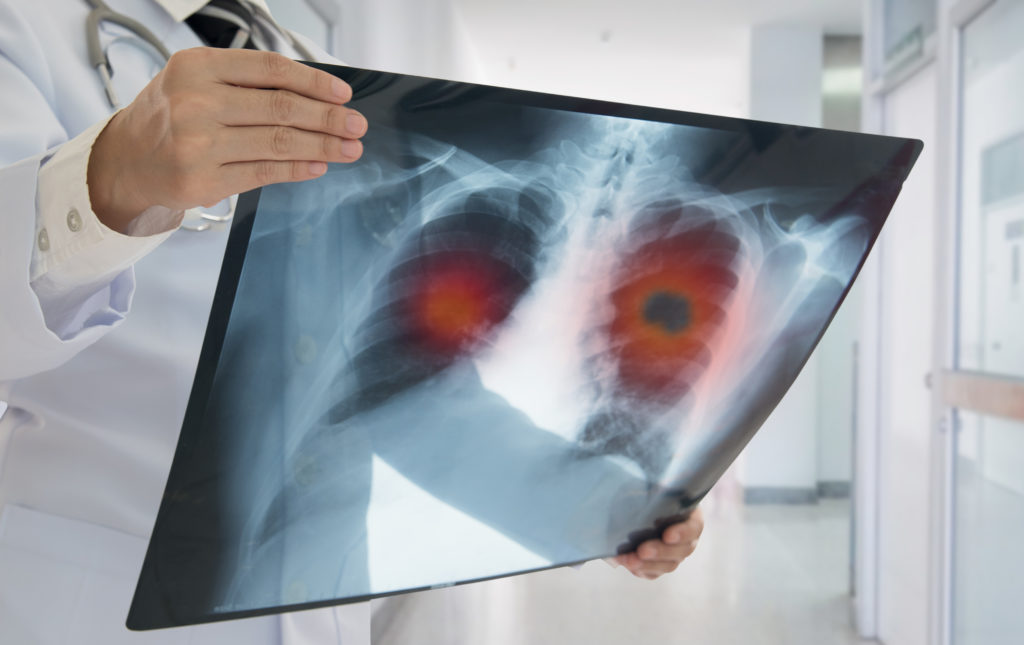Lung cancer is one of the leading causes of death in the United States. Estimated U.S. deaths from the disease during 2017 are nearly 160,000 – the population of a mid-sized city. It’s a devastating illness.
As is the case with all cancers, lung cancer entails the out-of-control growth of cells. It has the potential of spreading to other parts of the body, depending on the type of cancer. Such prolific, unchecked growth often prevents bodily organs from functioning properly, eventually leading to death. The spread of cancer is sometimes slow, other times, very fast.
Because the lungs are so vital to life – delivering oxygen to the heart – a disease that befalls them can have the most serious of consequences.
Prevention
Many treatment options are available for those afflicted with lung cancer, but prevention is always preferable. It’s become kind of cliché, but it bears repeating again and again: Do not smoke! If you are a smoker, go through the necessary steps (unpleasant as they may be) to stop. Your life may very well depend on it. Here’s why: A full 80 percent of deaths from lung cancer are traceable to smoking.
Kicking Nicotine Addiction
Giving up tobacco is an act of courage, but one that is essential to a person’s well-being. The reason for the difficulty is that cigarettes contain nicotine, an addictive drug. More people in the United States are addicted to nicotine than any other drug. People approach smoking cessation in a number of ways: “cold turkey,” a nicotine patch, prescription medication and more natural remedies. If you’re thinking about quitting, please talk to your physician about which options are likely to deliver you the best results.
The Diagnosis
A patient diagnosed with lung cancer usually visits the doctor with such symptoms as chest pain, a persistent cough, the coughing up of blood, hoarseness, weight loss, or extreme fatigue. Various tests can determine whether these are the result of lung cancer. Chest X-rays, CT and/or PET Scans, and laboratory analyses of mucus can all reveal the disease.
A physician who suspects cancer in a lung will often recommend a biopsy, which involves the extraction of cells through a CT-guided biopsy or diagnostic bronchoscopy. Once the diagnosis of lung cancer comes back, the doctor and patient must then consider treatment.
Treating Lung Cancer
The treatments for lung cancer patients are varied. In some cases, a surgeon will remove the cancerous tumor from the lung. If the cancer has not spread to other parts of the body, this can be an effective course of action.
Chemotherapy is the use of drugs to kills cancer cells in the body. In some cases, the doctor will use beams of radiation to destroy the cells. The treatments a physician will recommend depend on the type of cancer, whether it has metastasized or spread, and whether the cancer is fast-growing small-cell variety.
Immunotherapy and DNA treatment of tumors has come to the forefront in recent years for non-small cell lung cancer. The strategy behind these drugs is to bolster the body’s own defenses – particularly the T-cells, which fight cancer naturally.
Thankfully, medical technology is always moving forward. New treatments offer new hope to patients afflicted with this disease. Many survivors of lung cancer go on to live normal lives thanks to these innovations.
If you’ve been diagnosed, talk to your physician about the latest available treatment options. If you haven’t, be sure to practice the healthy lifestyle that can keep it at bay.
To find a doctor or schedule an appointment, visit Steward DoctorFinder™.




